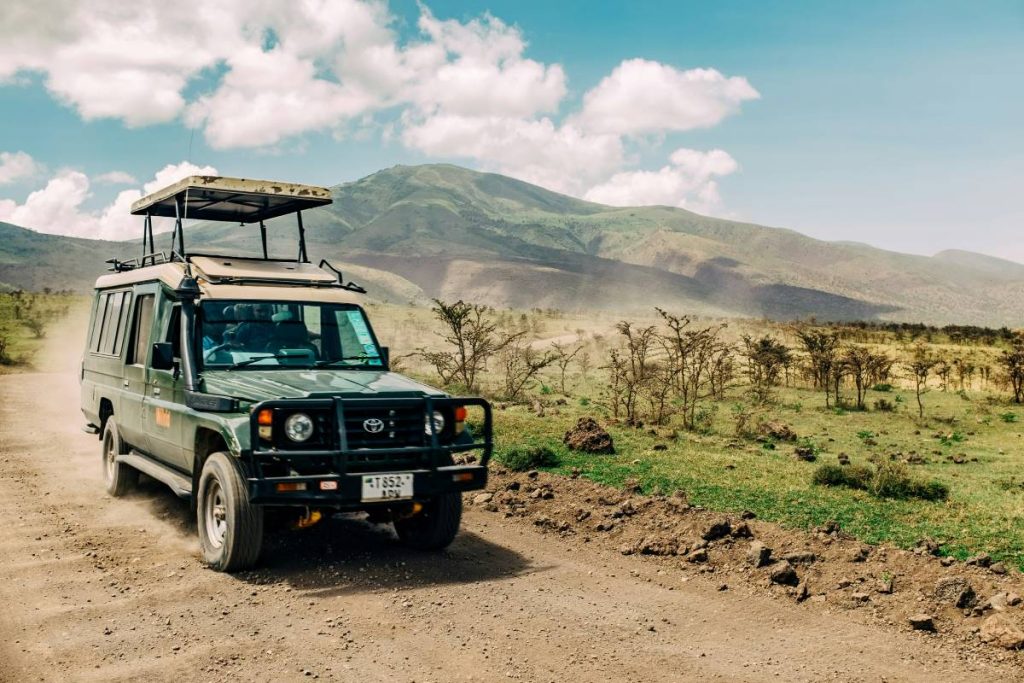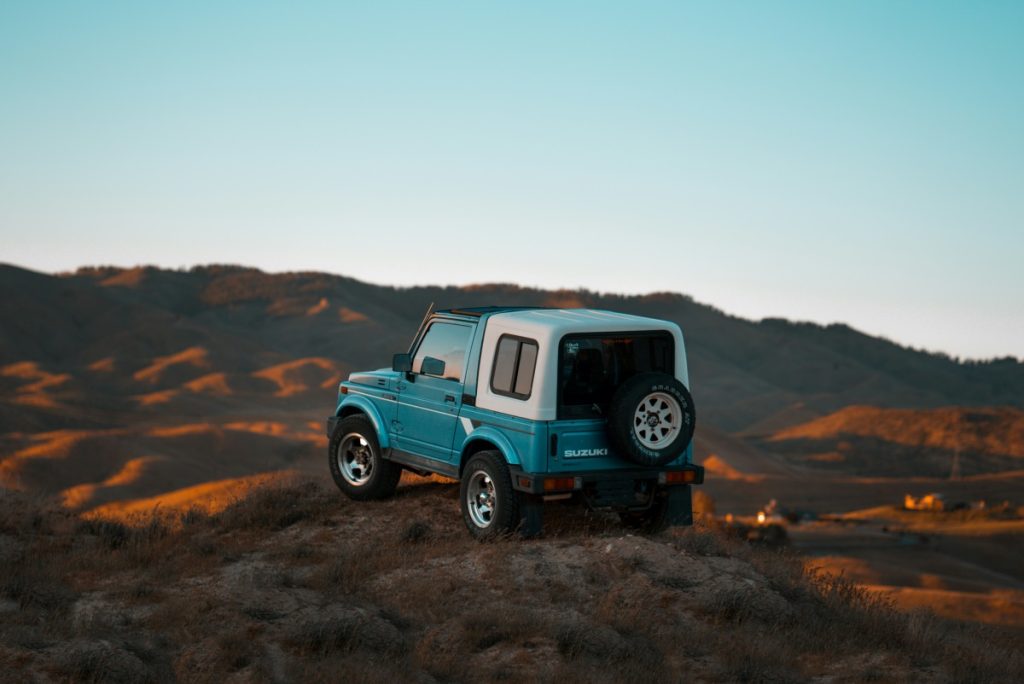
11 Critically Endangered African Penguins Released in Plettenberg Bay
There’s a particular kind of magic that settles over the Garden Route during the festive...
 23 December 2025
23 December 2025 
What makes a car iconic? Is it the looks, the power, the sound, or the name? When it comes to 4x4s, one thing has always set the best apart from the rest: off-road capability. The names that immediately come to mind are Land Rover, Toyota, and Jeep, but today, there’s a whole range of 4x4s on the market, each capable of climbing obstacles and tackling mud, sand, and snow with ease.
However, this wasn’t always the case, and 4×4 history has been marked by breakthrough innovations in drivetrain technology and robust design. We’ve put together a list of our top five most iconic 4x4s of all time: vehicles that have changed the course of 4×4 history. Read on to learn more about the stories behind these quintessential off-roaders.

Photo: Getty
The modern-day Jeep Wrangler remains a favourite of off-road enthusiasts around the world, most notable in its home country, the USA. However, you might not know that the Jeep has military roots stretching all the way back to World War II. In 1941, Willys, Bantam, and Ford contributed to the launch of the original “jeep”, and thanks to some clever post-war marketing, we know it today as the Willys MB “Jeep”.
At the time, the US Army had been playing catch-up in the military arms race, especially in the vehicle department. It commissioned these companies to develop a low-profile, four-wheel drive vehicle that was easy to manufacture on a large scale. The result was the MB, a quarter-ton vehicle that served a huge variety of roles during WWII and subsequent conflicts.
Willys released a civilian version, the Willys CJ, in 1945, and in 1987, it was renamed the Jeep Wrangler. To this day, it remains a staple of the 4×4 market, with the latest model lineup (JL) including a plug-in hybrid version.

Photo: Unsplash
You’d be forgiven for thinking that the Toyota Land Cruiser is an African vehicle. After all, people from all over the world associate the rugged 4×4 with African landscapes – and for good reason. The J70 series built on the success of its Jeep-like predecessor, going on to become the core of a 40-year dynasty that’s still in existence today.
The original design featured a boxy shape, distinctive round headlights, and three chassis options: short-wheelbase (SWB, 70/71), medium-wheelbase (MWB, 73/74), and long-wheelbase (LWB, 75/78). The LWB model is perhaps the most iconic and is still available in pick-up truck (bakkie) and station wagon format.
Central to the Land Cruiser’s success is its tenacious four-wheel drive system, which has proven to be incredibly resilient even under extremely harsh conditions. That’s probably why – here in southern Africa, at least – it remains the top choice among farmers, game rangers, and safari operators. In 2023 Toyota unveiled a fresh design for the 70 Series, including LED headlights, an upgraded infotainment system, and the choice of the hugely-popular 2.8 l GD-6 turbodiesel engine. However, under all the flash, it’s still the same die-hard off-roader it’s always been.
You might also like: 6-Sleeper 4×4 Rental: Meet the Africa on Wheels Toyota Land Cruiser HJ 76

Photo: Getty
What would a 4×4 list be without a Land Rover? The brand is synonymous with off-roading around the world and continues to be one of the most beloved manufacturers of 4x4s among off-roaders and city slickers alike.
It all started with the original Land Rover, a Rover Company model inspired by the original Jeep. The Land Rover Series 1 featured a ladder-frame chassis with an aluminium body that kept it relatively light. Combined with an unusual part-time 4×4 system, it remained popular throughout the 1950s, resulting in the launch of the Series II.
The successor was designed to be better-looking and was given wider tracks and a new petrol engine. Before long, Land Rover launched the Series IIA and went on to sell hundreds of thousands of units. In 1971, it introduced the Series III, easily the best-selling of all the Series models. It set the tone for future Land Rover designs and technology. In fact, the iconic Defender shared much of its architecture with the Series models, adding coil springs, a lockable centre differential, and some cosmetic updates.
In 2019, Land Rover rocked the 4×4 world and unveiled an all-new Defender, marking the first serious departure from the original design. The modern version swaps out the ladder-frame chassis for a unibody chassis, and there are even two plug-in hybrid models on offer. Regardless, it’s still carrying the flag for the original Land Rover.

Photo: Unsplash
Land Rover wasn’t satisfied blessing the world with the Defender. In 1970, it introduced the Range Rover, a more upmarket offering compared to the workhorse-like Series I, II, and III. Despite its plush interior and more modern design, it retained the features that made Land Rover famous: superb four-wheel drive and a suspension that could take a real beating.
It was a marked improvement over the Land Rover in several ways. Firstly, it featured a powerful V8 engine and permanent four-wheel drive. It had a top speed of 160 km/h and boasted hydraulic disc brakes on all four wheels, and an impressive towing capacity. Appropriately, Land Rover called it “A Car For All Reasons”, citing its excellent performance both on and off-road.
It was so good, in fact, that it won the four-wheel drive class at the Paris-Dakar Rally in 1979 and 1981. In 1994, the company launched the new Range Rover, this time offering the option of a 2.5 l V6 BMW turbodiesel engine. It was followed by the L322 model in 2001, which Jeremy Clarkson called “the best car in the world and best 4×4”.
Two more generations have followed since, each building on the legacy of a fully-capable off-roader with a luxury twist.

Photo: Unsplash
The Suzuki Jimny is absolute proof that dynamite comes in small packages. In Japan, small cars, called kei cars, aren’t unusual, but Suzuki truly did something special when it designed a 4×4 model. It all started with the LJ10, a tiny off-roader launched in 1970 that had a compact 359 cc engine and four-wheel drive.
A few iterations later, Suzuki launched the Samurai in the US, marking the start of this vehicle’s international stardom. Among other feats, it held the record for the highest altitude attained by a four-wheeled vehicle: 6,688 m on the Ojos del Salado mountain in Chile.
By the time Suzuki unveiled the third-generation in 1997, it was rebranded the Jimny in all markets and featured a modern, rounded design and a 1.3 l petrol engine. However, it retained its ladder-type chassis and dual-ratio transfer case, setting it apart from compact SUV competitors as a genuine 4×4.
The latest generation has proven popular among off-roaders and city drivers alike, largely thanks to its boxy looks, compact size, and modern upgrades. It also has a more powerful 1.5l petrol engine, and you can even get it in a five-door version.
You might also like: 5 South African Campsites to Visit in a Suzuki Jimny 5 Door Camper

Photo: Unsplash
There you have it: the five most iconic 4x4s of all time. Sure, not everyone might agree with this list, and some might want to include other icons like the Mercedes-Benz G Class or the Toyota Hilux. All that proves is that 4×4 culture is alive and well – with plenty of people eager to continue the legacy that these vehicles have cultivated over decades.
If you’re feeling inspired to leave the city behind and head off-road, you can choose from our wide selection of 4×4 vehicles. You’ll be able to plan the ultimate 4×4 road trip through southern Africa, whether you’re after wildlife or natural landscapes. Either way, off-roading is one of the best ways to explore!